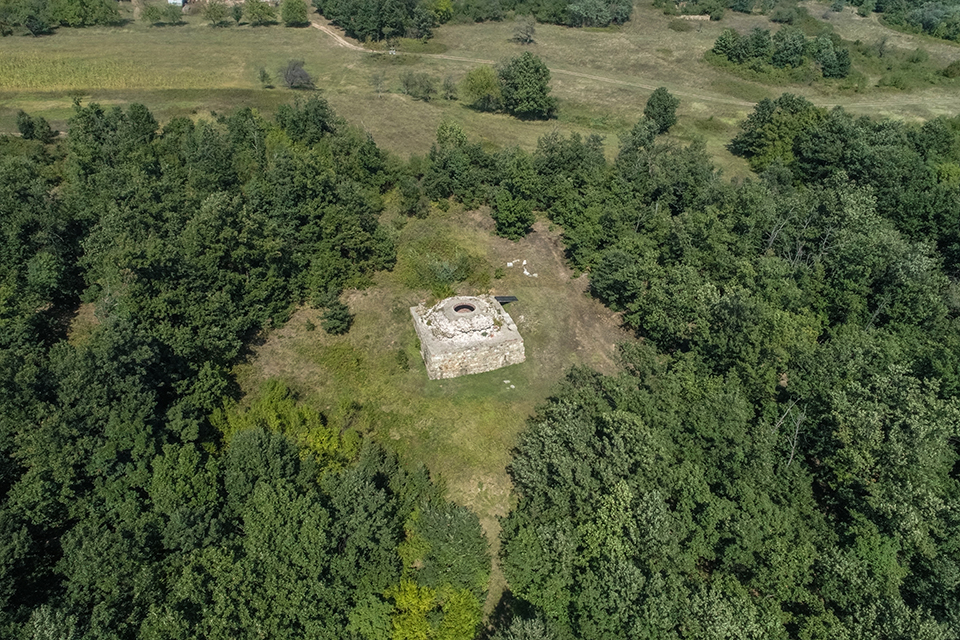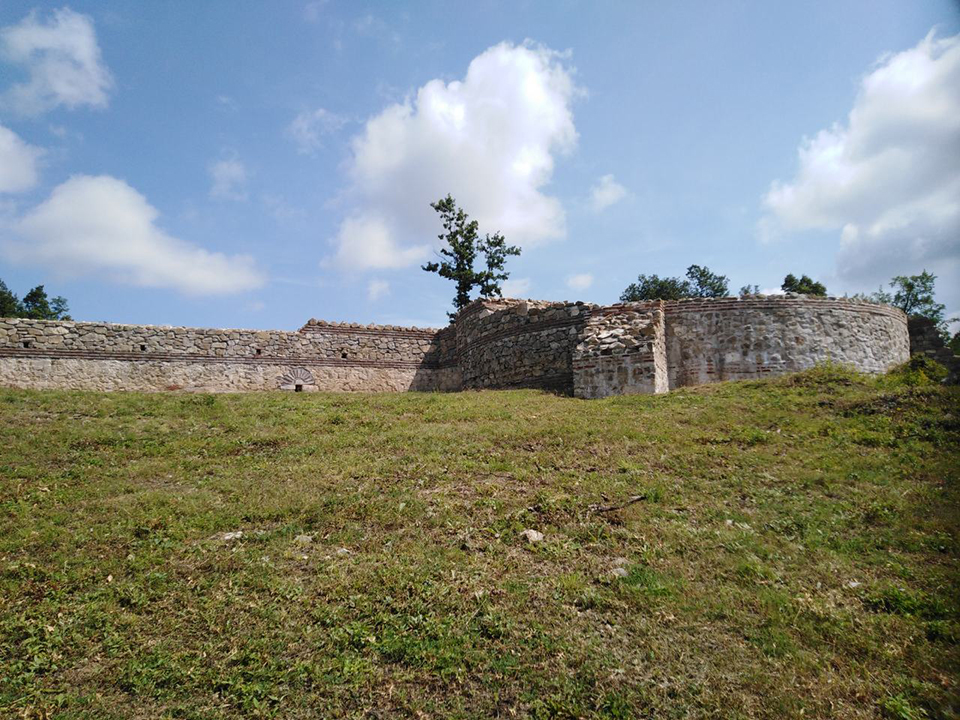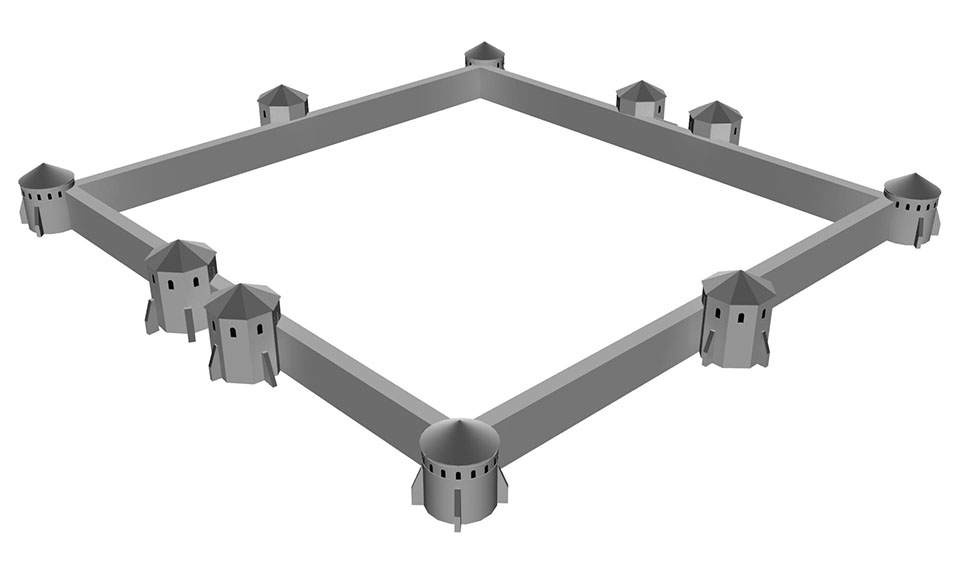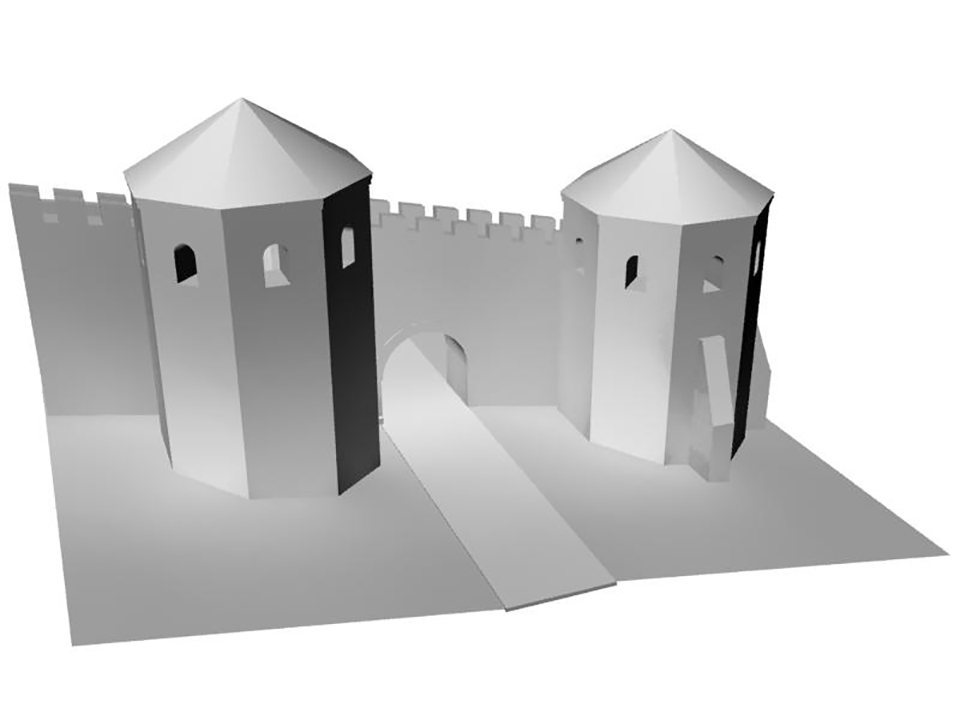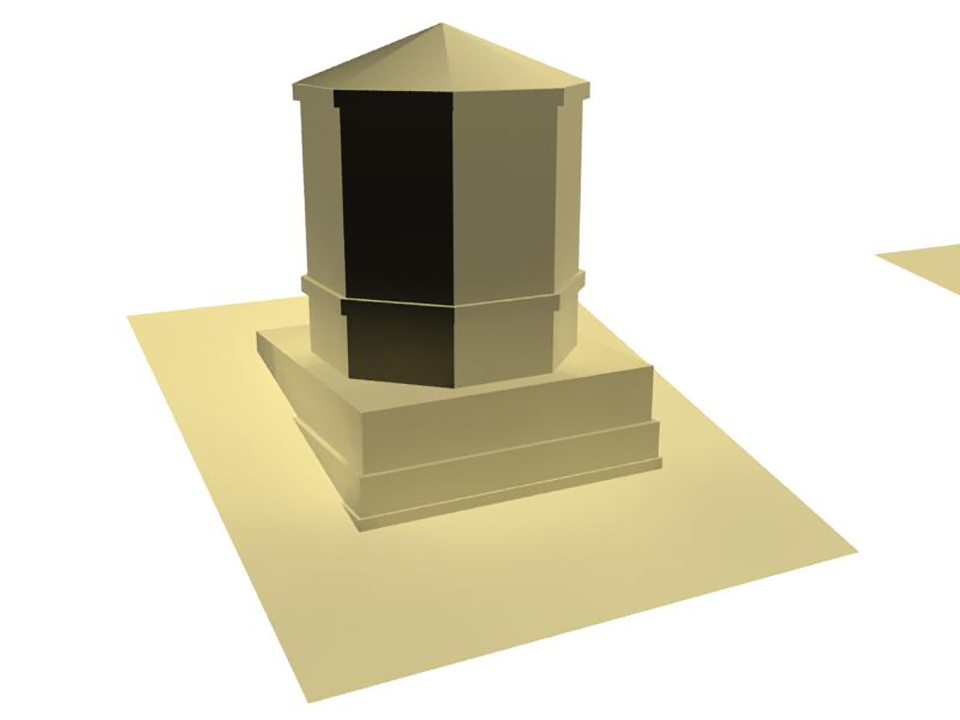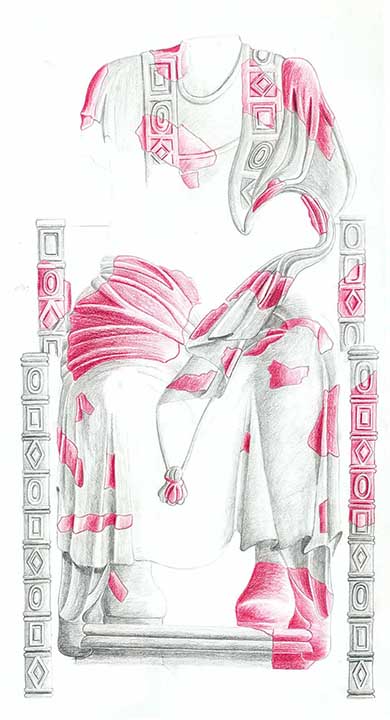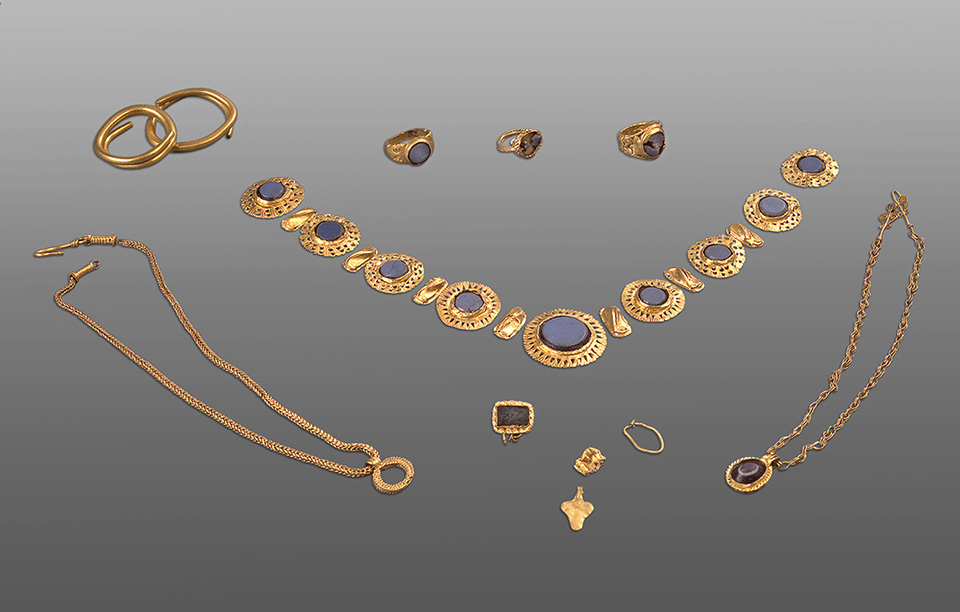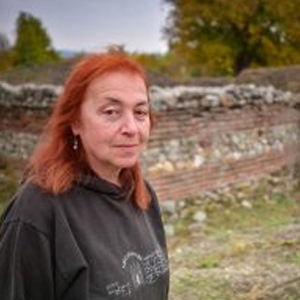
VRELO – ŠARKAMEN NEAR NEGOTIN
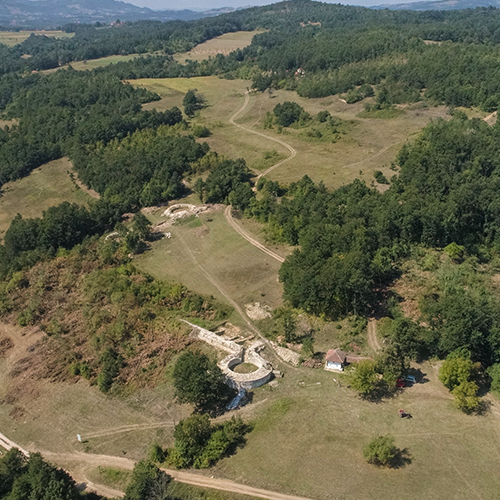
Project Director: Dr Sofija Petković
Team :
Dr Igor Bjelić, Institute of Archaeology, Belgrade
MA Marija Jović, Institute of Archaeology, Belgrade
Museum advisor Gordan Janjić, Museum of Krajina, Negotin
MA Nikola Radinović- Belgrade
Co-operation:
Institute of Archaeology, Belgrade
Museum of Krajina, Negotin
Institute for the Protection of Cultural Monuments, Niš
The Roman site of Vrelo is located 4 km west of the village of Šarkamen, which is located about 20 km northwest of Negotin, in eastern Serbia. Šarkamen is a fortified residence, and the memorial complex with a mausoleum and the tumulus are dated to the beginning of the 4th century and are ascribed to the tetrarch Maximinus Daia (305–313). Fragments of a porphyry sculpture of the emperor seated on a throne were discovered on the slope south of the memorial complex. The empress-mother was buried in the mausoleum with a set of gold jewellery.
The Roman site of Vrelo is located on the left bank of the Vrelo River, 4 km west of the village of Šarkamen, about 20 km northwest of Negotin, in eastern Serbia, on the slopes of Deli Jovan.
The site was first recorded by Felix Kanitz in 1889 as a Roman fortification with eight circular towers and a square base with 100 x 100 m dimensions. In 1947, the architect Đurđe Bošković visited Vrela and sketched the visible objects: a Roman fortification with 10 circular towers, an irregular quadrangular base, measuring 81 x 91 m, a bridge and a “temple” on the left bank, and ” thermal baths” on the right bank of the Vrel river. The first archaeological research at Šarkamen was undertaken by the curators of the Krajina Museum in Negotin, Milica and Đorđe Janković, in 1975.
In the period 1994–2003, SANU, the Archaeological Institute in Belgrade, and the Krajina Museum in Negotin began systematic archaeological research of this site. Under the overall management of Dr Dragoslav Srejović, the archaeological research was managed by Dr. Miodrag Tomović from the Archaeological Institute, and members of the expert team were Đoko Jovanović and Gordan Janjić, curators of the Krajina Museum, Dr. Čedomir Vasić, architect of the Institute for the Protection of Cultural Monuments, Niš and Borisav Marković, geodesy engineer, KU Negotin.
Several objects were discovered on the left and right banks of the Vrelo River:
A – fortification of the imperial residence, B – imperial mausoleum, C – consecratory tumulus, D – platform of stone slabs along the western side of the mausoleum, E – late antique building next to the southern tower of the western gate of the fortification, F – metallurgical workshop west of the memorial complex, G – square building foundations west of the tumulus (brick tomb?), H – economic building on the right bank of the Vrel river, I – a large building (basilica?) on the left bank of the Vrel river and J – economic building (horreum?) northwest of the fortification.
Given the limited area of excavation and the small amount of movable archaeological finds, the researchers, based on the analogy with the tetrarchy palace of Felix Romuliana in Gamzigrad, assumed that Vrelo was an unfinished fortification of the imperial residence from the tetrarchy era.
The secret of the Šarkamen fortress was largely revealed by the excavation of the building with the dome in the period from 1994 to 1996, which is located about 250 m to the west. It was found to be an imperial mausoleum, very similar to the imperial tombs next to the consecratory mounds on Magura Hill, east of the imperial residence at Gamzigrad. These two mausoleums are attributed to Emperor Galerius and his mother Romula, and were built at the end of the 3rd century (AD 294-295) for the empress-mother and at the beginning of the 4th century (AD 206-211) for Emperor Galerius. In the mausoleum were found 3 gold necklaces, 2 earrings, 3 rings, 2 hair ornaments (salteleons), one leaf-shaped pendant and 9 leaves of a diadem made of gold sheet with imprinted portraits of tetrarchs. The portraits imprinted on the obverse of gold coins, aurei, minted during the 1st tetrarchy (294-305), have been identified based on iconography and inscriptions as two of Diocletian, one of Constantius Chlorus and, perhaps, one of Galerius. The jewellery belongs to the more luxurious jewellery production from the period of the second half of the 3rd century. All this points to the fact that the empress was buried in the mausoleum at the beginning of the 4th century, most likely around 305/306.
To the north of the mausoleum is a mound, a tumulus, with a diameter of 14.5 m, and a preserved height of 2.5 m, above 6 graves of cremated deceased. It remains unclear how the tumulus above these graves was related to the mausoleum, other than the fact that it was created at the same time as the imperial tomb. Based on the findings, the mentioned graves can be dated to the end of the 3rd and the first half of the 4th century.
Due to the similarity with the residential-memorial complex at Gamzigrad and Magura, the fortified residence and mausoleum at Vrelo dates back to the beginning of the 4th century, and are attributed to the tetrarch Maximin Daya (305-313 AD), who was the cousin of Emperor Galerius. In contrast, in the mausoleum, the cremated remains of Galerius’ sister and Romula’s daughter, whose name is unknown to us from historical sources, were stored. The beginning of construction of the complex at Vrelo was placed in the year 309/310 when Maximin Daya declared himself August. The construction lasted, most likely, until the middle of 313, when Daya was defeated by his rival Licinius and soon thereafter died tragically.
Fragments of a porphyry sculpture of the emperor on the throne were found on the slope to the south of the mausoleum and to the west, in the area between the memorial complex and the late antique workshop (building F). Apart from seven larger parts, a large number of small, atypical fragments were found. Unfortunately, parts of the statue’s head, which could reveal the identity of the emperor, are missing.
2013-2020. Archaeological research at the Vrelo-Šarkamen site was renewed by the Archaeological Institute in Belgrade and the Negotin Krajina Museum. Excavations of the fortifications of the tetrarchy palace completely revealed the southeast tower (tower 8), and the south-eastern corner of the interior of the fortress, with 4 rooms along the southern rampart, explored to a length of 15 m. Also, the western gate and the towers flanking it were investigated (towers 1-2). Along the western rampart, north and south of the gate, 3 rooms each were explored. Due to the lack of movable finds, the function of the rooms inside the fortification, built along the southern and western ramparts, could not be determined.
Revision excavations of the northern rampart were carried out in the probe in which it was found in 1994. The northern rampart was discovered to a length of 14 m. The poor preservation of the northern rampart is due to the steep decline of the terrain from north to south and the pronounced erosion of the soil in the area of the fortification.
Research conducted in 2013-2020, to some extent, changed the earlier hypotheses regarding the tetrarchy residence at Vrelo near Šarkamen, primarily in the architectural-construction solutions and the fact that, aside from the ramparts and towers, buildings were also built inside the fortification. An aerial LIDAR scan of the site in 2021 confirmed the new excavation results and raised new questions about the structure of the fortified residence.
Selected Bibliography:
И. Бјелић, Специфичности зидања утврђеног резиденцијалног комплексана локалитету Врело–Шаркамен, Гласник српског археолошког друштва 35, 2019. (ур. Д. Антоновић ), Српско археолошко друштво, Београд: 65-84.
Г. Јањић, С. Петковић, И. Бјелић, Врело – Шаркамен код Неготина. Тетрархијска резиденција Максимина Даје/ G. Janjić, S. Petković, I. Bjelić, Vrelo – Šarkamen. Tetrarchic Residence of Maximinus Daja, Музеј Крајине: Неготин 2021, 1-139.
Ђ. Јанковић, Истраживање споменика у Врелу, Шаркамен, Старинар 30/1980, 87-93.
Đ. Janković, M. Janković, Vrelo – Šarkamen, zaštitna arheološka iskopavanja, Arheološki pregled 17, Beograd 1975, 86-88.
Petković, G. Janjić, N. Radinović, Carska rezidencija Vrelo-Šarkamen kod Negotina. Istraživanja u 2013. godini, u: Arheologija u Srbiji. Projekti Arheološkog instituta u 2013. godini, ur: 2013, D. Antonović, Beograd 2015, 64-68.
Petković, G. Janjić, Vrelo – Šarkamen. Arheološka istraživanja, prezentacija i promocija 2015. godine, u: Arheologija u Srbiji 5. Projekti Arheološkog instituta u 2015. godini, ur. 2015, N. Gavrilović-Vitas, I. Bugarski, V. Filipović, Beograd 2017, 92-96.
Petković, G. Janjić, M. Jović, I. Bjelić, Vrelo – Šarkamen, arheološka istraživanja, prezentacija i promocija u 2016. godini, Arheologija u Srbiji. Projekti Arheološkog instituta u 2016. godini, 2013 ur. Ivan Bugarski, Nadežda Gavrilović Vitas i Vojislav Filipović, Beograd 2018, 91-98.
Petković, I. Bjelić, D. Vulović, G. Janjić, N. Radinović, Šarkamen, arheološka istraživanja, prezentacija i promocija 2017. godine, u: Arheologija u Srbiji 7. Projekti Arheološkog instituta u 2017. godini,ur. N. Gavrilović-Vitas, I. Bugarski, V. Filipović, Beograd 2019, 135-141.
Popović, M. Tomović, Golden jewelry from the imperial mausoleum at Šarkamen (Eastern Serbia), Antiquité tardive 6, 1998, 287-312.
Šarkamen (Eastern Serbia): A Tetrarchic Imperial Palace. The Memorial Complex, Edited by Ivana Popović, Archaeological Institute, Monographs No. 45,Belgrade 2005.
И.Поповић, Порфир, Mоћ царева и достојанство богова.Скулптуре из римских градова и палата у Србији (Porphyry, power of emperors and dignity of gods. Sculptures from Roman towns and palaces in Serbia), Археолошки институт, Београд 2017.
Srejović, M. Tomović, Č. Vasić, Šarkamen. Tetrarchial Imperial Palace. Starinar XLVII, 1996: 231–236.
Šarkamen (Eastern Serbia): A Tetrarchic Imperial Palace. The Memorial Complex, Edited by Ivana Popović, Archaeological Institute, Monographs No. 45,Belgrade 2005.
М. Томовић, и Ч.Васић, Врело – Шаркамен. Царска палата. Златни накит из маузолеја у Шаркамену, каталог изложбе, Народни музеј Београд, Музеј Крајине Неготин: Београд 1997.
Vasić and M. Tomović, Šarkamen (East Serbia): An Imperial Residence and Memorial Complex of the Tetrarchic Period. Germania 83 (2), 2005: 257–307.



